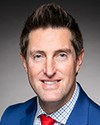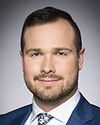I'd like to answer you in French, but it would be too difficult for me, so I'll answer you in English instead.
You asked me and gave me time again to talk about western science and indigenous knowledge and how they can be brought together to inform policy. I think you heard some great examples from Russ Jones, Barbara Wilson and Bruce.
I'm going to give you another example of something magical and innovative. Some of you have maybe heard of ancestral clam gardens. These are intertidal rock-walled terraces built by people 4,000 years ago, which we've shown, by bringing western science and indigenous knowledge together, can double to quadruple the number of clams produced for food in one place. They're truly outstanding. These are not only things to marvel at as technologies, but they can be used well into the future. I was thinking about extreme climatic events.
By bringing our knowledge systems together, we've figured out how these things work. One way they work is by keeping beaches cool, because they change the slopes of beaches and they stay wetter for longer. Sea-water has a high heat capacity, so these clams can grow twice as fast. When you get these extreme climatic events like heat domes, for example, which we experienced in the Pacific Northwest several summers ago, or extreme heat waves through the warming of the ocean itself, these things can cool down the clams and allow them to grow and not get diseased with bacteria.
These are some technologies bring information together with these two ways of understanding a system—two lenses—almost like at different scales of understanding. We can bring in genetics and we can bring in stable isotopes, based on hypotheses given to us by our indigenous collaborators. We can see how these work. It has real policy implications for how we manage the foreshore and make them resilient to future climatic disturbances, for example.





